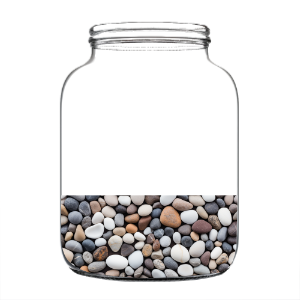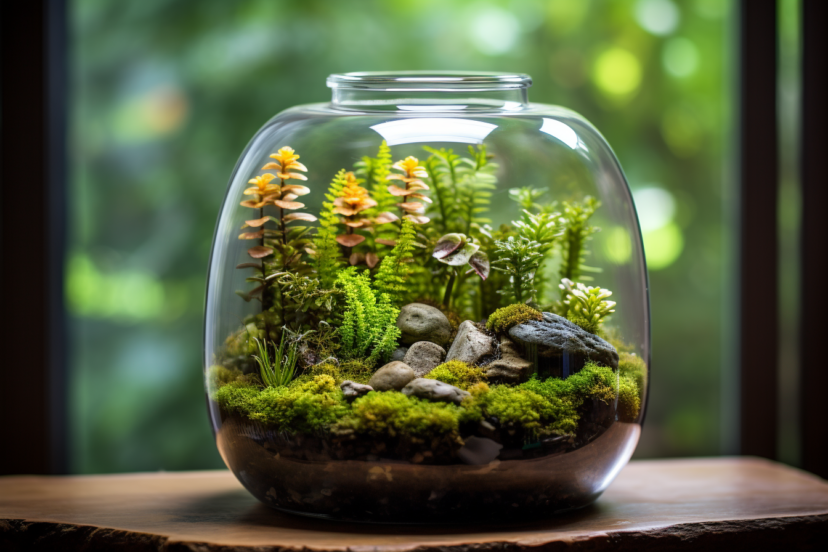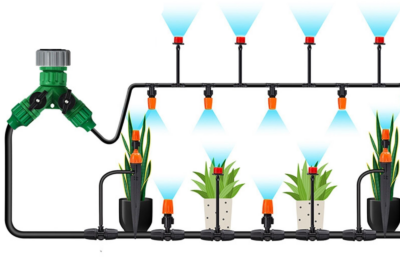How to Make a Terrarium: Detailed Guide
Learning how to make a terrarium can be a delightful and rewarding experience, bringing a piece of nature into your home. If you’re a green thumb looking for a new project or a beginner eager to delve into the world of indoor gardening, this guide will walk you through the steps to create your miniature ecosystem.
Introduction
Becoming an expert on how to make a terrarium is like opening the door to a world of miniature landscapes, all within the confines of your living space.
A terrarium is more than just an assortment of plants; it’s a living piece of art, a snapshot of nature that thrives with minimal care. The allure lies in its straightforward design and the tranquil ambiance it adds to any space.
The key to a successful terrarium lies in understanding the balance of its microenvironment, a crucial aspect of learning how to make a terrarium. And with the proper guide, you’ll soon have a lush, thriving miniature garden to call your own.
What is a Terrarium?
A terrarium is a self-contained environment, often housed in a transparent container, where plants and sometimes small animals live in a microecosystem. This miniature greenhouse provides an opportunity to observe the natural processes of plant growth and ecosystem balance, all within the comfort of your home.
The beauty of a terrarium lies in its simplicity and versatility. It can be as basic or as elaborate as you wish, catering to both seasoned gardeners and beginners alike. The closed nature of a typical terrarium creates a unique atmosphere where moisture is recycled, mimicking the natural water cycle. This results in a humid and stable environment, ideal for many tropical plant species.
Creating a terrarium isn’t so much about planting as about crafting a miniature landscape. Each element you choose, from the type of container to the selection of plants and decorative accents, contributes to your micro-ecosystem’s overall aesthetic and health.
Terrariums also offer educational value, making them an excellent tool for learning about ecology, the water cycle, and plant care. Watching a terrarium thrive over time provides a sense of accomplishment and a deeper appreciation for the delicate balance of nature.
In summary, whether you’re looking to add a touch of green to your living space, are seeking a new hobby, or want to learn more about ecosystems, building a terrarium is an enriching experience.
Why Create a Terrarium?
Creating a terrarium is much more than a simple gardening activity. It explores cultivating and nurturing life in a controlled yet natural environment. There are several compelling reasons why building terrariums can be a gratifying experience. And if you’re a beginner eager to delve into the world of indoor gardening, this guide will walk you through the steps on how to make a terrarium.
Firstly, terrariums are a perfect solution for those living in urban environments with limited space. They offer a way to bring the essence of nature indoors, transforming your living area or workspace with a touch of greenery. This miniature ecosystem doesn’t require a large area; it thrives even on a small desk or shelf. This is a unique opportunity for city dwellers to engage with nature personally.
Secondly, the maintenance of a terrarium is relatively low compared to traditional gardening. This is especially beneficial for busy individuals or those who may not have a natural green thumb. The enclosed nature of a terrarium creates an autonomous environment where moisture is continually recycled, reducing the need for frequent watering. This aspect makes it an ideal project for those seeking the joys of gardening without the extensive time commitment.
Moreover, crafting a terrarium is an excellent way to express creativity. Each terrarium is a blank canvas, allowing you to design and construct a landscape that is uniquely yours. The process is personal, from selecting the right plants and soil to adding decorative elements like stones or figurines. This creative aspect makes each terrarium a reflection of the individual who created it, and there’s immense satisfaction in seeing your vision come to life.
Finally, this article on how to make a terrarium highlights the therapeutic benefits of planning, creating, and caring for a miniature natural world. This can be a mindful and relaxing activity, offering a peaceful escape from the hustle and bustle of everyday life. The presence of a terrarium in a living space can improve mood, reduce stress, and even enhance concentration and productivity.
Choosing the Right Container
Glass Containers
Choosing a glass container for your terrarium is a crucial step. With its clear and elegant appearance, glass enhances the beauty of your miniature garden and serves functional purposes. As an indoor gardening enthusiast, I appreciate glass’s ability to create a visually appealing display while offering practical benefits.
The transparency of glass allows for maximum light penetration, which is essential for plant growth. It lets you observe the terrarium’s interior easily, making monitoring and maintenance straightforward. Furthermore, glass containers help maintain the proper humidity levels, vital for a thriving terrarium environment.
When selecting a glass container, consider its shape and size based on the types of plants you plan to include. Larger openings are suitable for plants that prefer less humidity, while smaller openings help retain moisture for humidity-loving plants. Remember, the choice of container can significantly impact the health and appearance of your terrarium.
Plastic Containers
Plastic containers are a practical and versatile option for terrarium enthusiasts. Unlike glass, plastic is less prone to breakage, making it a safer choice, especially in homes with children or pets.
One of the key advantages of plastic containers is their affordability. They offer a cost-effective way to experiment with terrarium design. Additionally, plastic retains moisture well, which is beneficial for creating a humid environment for tropical plants.
However, it’s essential to ensure proper ventilation to prevent mold growth. Opt for a clear, transparent quality for good visibility and light penetration when choosing a plastic container. This choice allows for creative freedom in design while ensuring the health of the terrarium’s inhabitants.
Selecting Plants for Your Terrarium
Low Maintenance Plants
When selecting plants for your terrarium, choosing low-maintenance varieties can make your gardening experience more enjoyable and less demanding. Certain plants thrive in the terrarium environment with minimal care, making them ideal for beginners and busy individuals.
Here is a list of starters for you to experiment with:
- Cheveria: A rosette-forming succulent known for its striking shapes and colors.
- Haworthia: A small, slow-growing succulent with distinctive striped leaves.
- Java Moss: A lush, green moss that’s easy to grow, offering a carpet-like appearance.
- Lemon Button Fern: A small fern with bright green, rounded leaves that emit a lemony scent.
- Tillandsia: Commonly known as air plants, these require no soil and absorb moisture from the air.
Colorful and Vibrant Options
Understanding how to make a terrarium is essential for incorporating colorful and vibrant options to transform your miniature garden into a lively and visually stunning display.
Here’s a list of various plants that will bring greenery and vibrant colors to your terrarium:
- Fittonia: A striking plant with veined leaves, often in bright red or green.
- Rex Begonias: Known for their unique foliage with a variety of colors and patterns.
- Croton: Features vibrant, multicolored leaves in shades of red, yellow, and green.
- Miniature Orchids: Small, delicate orchids that add a touch of elegance with their vibrant blooms.
- Philodendron: A versatile plant with heart-shaped leaves, easy to grow in terrarium conditions.
In conclusion, adding colorful and vibrant plants like Fittonias, Begonias, Crotons, and miniature Orchids can elevate the aesthetic appeal of your terrarium.
The Essentials of Terrarium Layers
Drainage Layer
Mastering the essentials of terrarium layers is crucial as you learn how to make a terrarium. Among these, the drainage layer forms the foundation of your miniature ecosystem. A well-constructed drainage layer is the bedrock of a healthy terrarium.
This layer, typically made of small stones or pebbles, lies at the bottom of your container. Its primary role is to prevent water from pooling around the plant roots, which can lead to root rot and other unwanted events. By creating a space where excess water can accumulate away from the soil, the drainage layer ensures that the moisture level within the terrarium remains balanced. This is especially important in a closed terrarium, where water circulation is limited.
Start by carefully placing an even layer of these stones at the bottom of your container. The thickness of this layer can vary, but a good rule of thumb is to make it about one-quarter to one-third the height of your chosen container. This proportion is sufficient to provide effective drainage while leaving ample room for the subsequent layers and plant roots.

Charcoal Layer
Charcoal, especially horticultural charcoal, is highly porous and acts as a natural filter. It absorbs impurities and odors from the soil and water, which is crucial in a closed environment like a terrarium. This filtering action keeps the water clean, thus preventing the growth of bacteria and fungi, which are common problems in humid conditions. Additionally, charcoal helps to balance the pH levels of the soil, ensuring a stable environment for your plants.
To create this layer, spread a thin layer of charcoal over the drainage stones. A layer about half an inch (12 mm) thick is typically sufficient. It’s important not to overdo it; a little goes a long way in maintaining the terrarium’s health.
Integrating the charcoal layer effectively contributes to a thriving terrarium. It’s a simple step, but its impact on the overall ecosystem is significant.

Soil Layer
The soil layer is undeniably the heart of your miniature garden. Learning how to make a terrarium involves understanding the importance of choosing suitable soil to prevent root rot. As a result, your plants will thrive in this layer, nestled above the charcoal.
For most terrarium plants, a well-draining soil mix is essential. So, you can opt for a pre-mixed potting soil designed for indoor plants, which usually offers a balanced blend of peat, perlite, and vermiculite. These components ensure good aeration and drainage, preventing water from stagnating around the roots.
When adding the soil, aim for a depth that allows your plants’ roots to spread comfortably, usually about two to three inches (50 to 75 mm). Be mindful to leave enough space for your plants to grow; overcrowding can lead to mold and poor air circulation.
Remember, the soil is not just a medium for holding your plants in place. It’s a living, breathing foundation that contributes to your terrarium’s overall health and beauty. You’ll set the stage for a lush and flourishing miniature ecosystem by giving due attention to this crucial layer.

Maintaining Your Terrarium
Watering
Watering your terrarium is more about finesse than frequency. The enclosed nature of a terrarium often leads to a self-sustaining moisture cycle, which means your watering duties are minimal. However, it’s crucial to strike the right balance.
Typically, a light misting every two to four weeks is sufficient. Use a spray bottle for an even moisture distribution, ensuring the soil is damp but not soggy. Be vigilant about the condensation levels inside the glass; if you see a lot of moisture clinging to the walls, hold off on watering for a while. This is a sign that your ecosystem is adequately hydrated.
Remember, your chosen plant type also dictates your watering schedule. Succulents and cacti require less water compared to tropical plants. Observing your terrarium’s microclimate and responding to its needs is the essence of proper maintenance. This attentive approach keeps your miniature garden thriving and deepens your connection with this enchanting piece of nature in your home.
Pruning
Pruning is an essential aspect of terrarium care, often overlooked but vital in maintaining the health and aesthetics of your miniature ecosystem. It’s not just about cutting back overgrown plants; it’s about shaping the environment to promote healthy growth and balance.
When pruning, focus on removing dead or yellowing leaves first. These can harbor mold and pests, potentially harming your terrarium’s health. Next, trim back overgrown plants to prevent them from overshadowing smaller, slower-growing species. This maintains your terrarium’s visual appeal and ensures that all plants receive adequate light and space to grow.
Use small scissors or tweezers for precision, and always prune with a gentle hand. It’s better to prune little and often rather than do drastic cuts. This way, you can gradually shape your terrarium and avoid shocking the plants.
Remember, pruning is an art as much as it is a science. It’s about understanding the growth patterns of your plants and guiding them to create a harmonious, balanced landscape within your terrarium. As you master how to make a terrarium, incorporate regular pruning into your maintenance routine to keep your miniature garden looking its best.
Sunlight
Sunlight is a pivotal element in the world of terrariums, playing a crucial role in the health and growth of your miniature garden. It’s not just about placing your terrarium near a window; it’s about understanding the light requirements of your specific plants and adjusting their exposure accordingly.
Most terrarium plants thrive in bright, indirect light. Direct sunlight can be too intense, leading to scorched leaves, whereas insufficient light may cause plants to become leggy as they stretch toward a light source. The ideal spot is near a window that receives ample but diffused light. If natural light is limited, consider using grow lights.
Remember, the type of container also influences light exposure. A terrarium with a wide opening allows more light than one with a narrow neck. Observe your plants’ response to their light conditions and adjust their placement if necessary.
Conclusion
Hopefully, this guide on how to make a terrarium will help you create something that will provide many hours of enrichment. Remember that the key to a successful terrarium lies in understanding and following a few essential steps:
- Choosing the suitable container: Whether glass or plastic, ensure it suits the plants you wish to grow. Glass offers a clear view and excellent light penetration, while plastic is more durable and less prone to breakage.
- Carefully select your plants: Opt for low-maintenance or colorful varieties, depending on your preference and experience level. Remember, each plant has unique light, water, and space requirements.
- Layering your terrarium correctly: Start with a drainage layer of small stones, a charcoal layer to filter impurities, and finally, add a nutrient-rich soil layer.
- Watering your terrarium: Use a delicate touch, as too much water can lead to mold, while too little can stress the plants.
- Regular pruning: Keep your plants healthy and maintain the aesthetic of your miniature garden.
- Sunlight: Ensure your terrarium receives the right amount of sunlight, ideally indirect, to avoid leaf burn.
In conclusion, building and maintaining a terrarium is a rewarding experience that brings a piece of nature into your home. With patience and care, you can create a thriving, self-contained ecosystem that offers both beauty and a sense of accomplishment.
FAQ
- What is the best type of container for a terrarium? Both glass and plastic containers are suitable for terrariums. Glass is preferred for its clear visibility and light penetration, but it’s more fragile. Plastic is more durable and less expensive but might not offer the same aesthetic appeal. Choose based on the desired look, your budget, and whether you have children or pets.
- How often should I water my terrarium? The frequency of watering depends on the types of plants and the terrarium environment. Typically, a light misting every two to four weeks suffices. Observe the condensation levels and the soil moisture: if there’s significant condensation or the soil feels damp, delay watering.
- What are some good plant choices for beginners? For beginners, low-maintenance plants like Cheveria, Haworthia, Java Moss, Lemon Button Fern, and Tillandsia (air plants) are excellent choices. These plants are easy to care for and can thrive in terrarium conditions.
- How important is the layering in a terrarium? Layering is crucial in building a terrarium. It involves creating a drainage layer (with small stones or pebbles), a charcoal layer (for filtration and to maintain pH balance), and a soil layer (nutrient-rich soil for plant growth). Proper layering ensures effective water management and healthy plant growth.
- Can I place my terrarium in direct sunlight? It’s best to avoid direct sunlight as it can scorch the plants. Most terrarium plants prefer bright, indirect light. If natural light is limited, you might consider using grow lights. The key is to provide enough light without exposing plants to harsh direct sunlight




